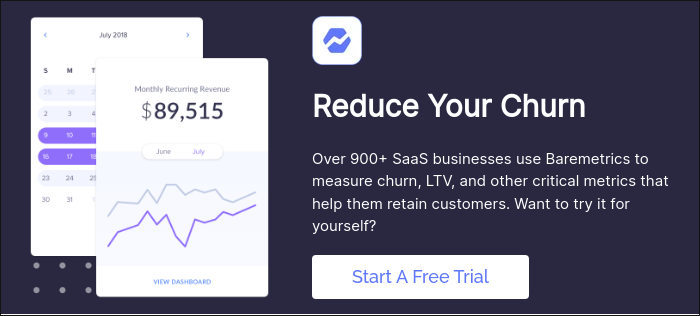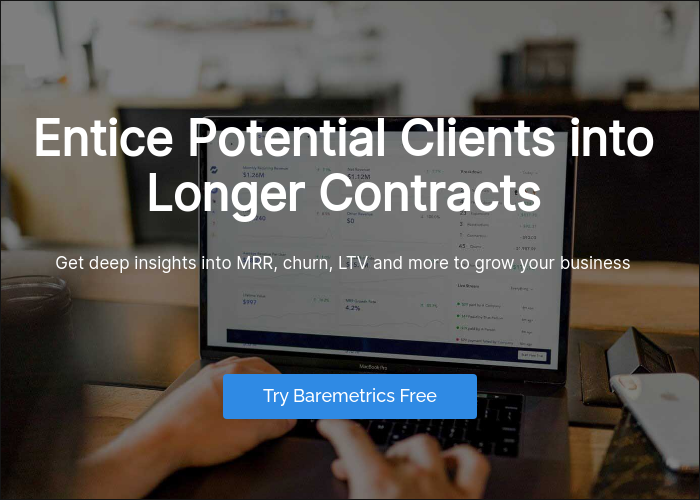Table of Contents
More Business Academy Articles
When it comes time to part ways with your business, you may look to sell it to someone else. One of the first questions that comes to mind is “how much is my SaaS business worth?”. You might turn to public SaaS revenue multiples. However, multi-billion dollar enterprises with thousands of employees do not serve as particularly good indicators for small, potentially bootstrapped SaaS businesses. So how do you value your SaaS business doing under $1,000,000 in ARR?
Smaller SaaS businesses are valued based on a multiple of seller’s discretionary earnings (SDE), or the profit left after all business-critical costs and expenses have been deducted from gross income. It’s important to mention that your owner salary would be added back to arrive at SDE.
Once you have calculated your SDE for the last twelve months, you need to identify a reasonable multiple, which could fall within a range of 3 to 6. Defining the multiple to use involves knowing what to look for.
What is Important?
Growth and Stability: The Bread and Butter of SaaS
Year-over-year and month-over-month growth are the most important factors to a strong multiple. As an owner, it’s important to focus on five growth levers. These are: lead generation, conversion optimization, upgrades and upsells, pricing optimization, and churn reduction. Slow growing businesses do well in one or two of these areas. The fastest growing companies demonstrate outstanding results in all five.
Month-over-month revenue variance will impact your multiple as well. Even if your business is growing year-over-year, if it relies on fluctuating sales of annual subscription plans or unpredictable onboarding of large contracts, buyers will discount when comparing to a business predictably producing 100% in monthly recurring revenue (MRR) with a lower volatility in new contracts.
Great Content and SEO is Rewarded
It is worth noting that a higher Moz Domain Authority is correlated with higher SaaS multiples. Search Engine Optimization (SEO) has historically been the cornerstone for success of E-Commerce and Content sites, while many SaaS owners neglect it in favor of other traffic generation methods. Nonetheless, SaaS owners who successfully deploy a solid content and SEO strategy are rewarded handsomely for their efforts.
Time is Money: Spend it Wisely
The amount of your time that is necessary to keep your business afloat represents the strongest negative correlation for the valuation multiple. A business that requires 40 hours of weekly input into management, development, technical onboarding, support or other high-value areas is a tough sell. How many hours per week is reasonable?
Assuming you don’t have a hired general manager on payroll, your SaaS business should run smoothly on anywhere from two to fifteen hours of your time every week. A business with less than two hours invested weekly is at risk of being perceived as neglected by the buyers. A business with more than fifteen hours may be perceived as selling a job as much as a business.
What is Less Important?
ARPU Tells Little
Average revenue per user (ARPU) is not a good predictor of the selling multiple. Trends in ARPU do eventually find their way onto the income statement and, by extension, the valuation. Nonetheless, comparing one business’ ARPU to the other tells you very little about their respective performance. Some buyers prefer low-touch B2C businesses with <$10 monthly ARPU. Others prefer enterprise software with ARPU in the thousands of dollars per month. Both run the multiple range.
Focus on Speed over Age
Age is not as important to selling multiple as many may believe. For e-commerce businesses, old age is critical. Years of successful operations tend to be a great indicator of the market fit. For SaaS, market fit can be demonstrated in a much shorter timeframe, using metrics like customer churn and visitor-to-signup conversion rates. Unfortunately, SaaS businesses that offer primarily annual subscription plans do not benefit from this acceleration. For monthly subscriptions model, each month provides a new data point on renewal rates and expected customer lifetime value (LTV). For annually recurring subscriptions, this data collection is slowed down significantly.
Other Considerations
Focus on Transferability and Transparency
While the above are factors that directly impact the valuation of a business, it is always important to consider potential roadblocks to a smooth transfer. Undocumented code, sloppy financials, non-transferable agreements, competing interests, and ongoing legal issues may have effects ranging from a slowdown to a complete derailing of a potential sale. Moreover, be careful when choosing a payment processor. Some processors, like PayPal, do not allow the transfer of account ownership across borders. This limits the buyer pool and, by extension, the market demand. Going with a modern payment processor like Stripe allows transfer of the account, complete with all recurring subscriptions.
Knowing your numbers is one of the best ways to ensure a smooth presale and sale process for your business. Using Baremetrics will enable you to track key metrics you need to accurately value your SaaS business.
Written by Thomas Smale, from FE International. FE International provides M&A advisory services for mid-market SaaS, e-commerce and content businesses. The company has become the pre-eminent adviser and valuation thought-leader in the industry.



